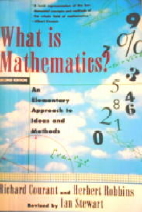 A recent discovery in the history of science and mathematics has prompted a number of articles, links to which are provided at the end of this text. Astrophysicist and science historian Mathieu Ossendrijver, of Humboldt University in Berlin, made the observation that ancient Babylonian astronomers calculated Jupiter’s position from the area under a time-velocity graph. He very recently published his findings in the journal Science. Philip Ball reported on the findings in Nature.
A recent discovery in the history of science and mathematics has prompted a number of articles, links to which are provided at the end of this text. Astrophysicist and science historian Mathieu Ossendrijver, of Humboldt University in Berlin, made the observation that ancient Babylonian astronomers calculated Jupiter’s position from the area under a time-velocity graph. He very recently published his findings in the journal Science. Philip Ball reported on the findings in Nature.
A reanalysis of markings on Babylonian tablets has revealed that astronomers working between the fourth and first centuries BC used geometry to calculate the motions of Jupiter — a conceptual leap that historians thought had not occurred until fourteenth-century Europe.
Also from Ball,
Hermann Hunger, a specialist on Babylonian astronomy at the University of Vienna, says that the work marks a new discovery. However, he and Ossendrijver both point out that Babylonian mathematicians were well accustomed to geometry, so it is not entirely surprising that astronomers might have grasped the same points. “These findings do not so much show a higher degree of sophistication in geometric thinking, but rather a remarkable ability to apply traditional Babylonian geometric thinking to a new problem”, Hunger says. (emphasis added).
This is learning or cognition at every level – applying an established thought or experience to a new problem.
An NPR report on the discovery takes note of the fact that Jupiter was associated with the Babylonian god Marduk. NPR’s Nell Greenfieldboyce comments:
Of course, these priests wanted to track Jupiter to understand the will of their god Marduk in order to do things like predict future grain harvests. But still, they had the insight to see that the same math used for working with mundane stuff like land could be applied to the motions of celestial objects.
And NYU’s Alexander Jones replies:
They’re, in a way, like modern scientists. In a way, they’re very different. But they’re still coming up with very, you know – things that we can recognize as being like what we value as mathematics and science.
I think Greenfieldboyce’s “but still…” and Jones’ follow-up comment betray an unnecessary dismissal of this non-scientific motivation. Discoveries like this one challenge a number of ideas that represent the consensus of opinion. These include the standard accounts of the history of science and mathematics, how we may or may not understand conceptual development in the individual as well as in various cultures, and also the cultural overlaps that exist in science, mathematics, art, and religion. In any case, in the years that I’ve been teaching mathematics, I’ve tried to reassure my students that there’s a reason that learning calculus can be so difficult. I suggest to them that the development of calculus relies on cognitive shift, a quantification of change and movement, or of time and space. And the attention that has been given this Babylonian accomplishment highlights that fact. The accomplishment is stated most clearly at the end of Ossendrijver’s paper:
Ancient Greek astronomers such as Aristarchus of Samos, Hipparchus, and Claudius Ptolemy also used geometrical methods, while arithmetical methods are attested in the Antikythera mechanism and in Greco-Roman astronomical papyri from Egypt. However, the Babylonian trapezoid procedures are geometrical in a different sense than the methods of the mentioned Greek astronomers, since the geometrical figures describe configurations not in physical space but in an abstract mathematical space defined by time and velocity (daily displacement). (emphasis added)
The distinction being made here is the difference between imagining the idealized spatial figures of geometry against the spatial arrangement of observed celestial objects versus imagining the idealized spatial figures of geometry as a description of the relations within a purely numeric set of measurements. There’s a big difference, a major difference, that open paths to modern mathematics.
Ossendrijver also describes, a bit more specifically, the 14th century European scholars whose work, until now, was seen as the first use of these techniques:
The “Oxford calculators” of the 14th century CE, who were centered at Merton College, Oxford, are credited with formulating the “Mertonian mean speed theorem” for the distance traveled by a uniformly accelerating body, corresponding to the modern formula s = t•(v0 + v1)/2, where v0 and v1 are the initial and final velocities. In the same century Nicole Oresme, in Paris, devised graphical methods that enabled him to prove this relation by computing it as the area of a trapezoid of width t and heights v0 and v1
Mark Thakkar wrote an article on these calculators for a 2007 issue of Oxford Today with emphasis on the imaginative nature of their analyses.
These scholars busied themselves with quantitative analyses of qualities such as heat, colour, density and light. But their experiments were those of the imagination; practical experiments would have been of little help in any case without suitable measuring instruments. Indeed, some of the calculators’ works, although ostensibly dealing with the natural world, may best be seen as advanced exercises in logic.
Thakkar reminds the reader that these men were philosophers and theologians, many of whom went on “to enjoy high-profile careers in politics or the Church.”
He also says this:
…with hindsight we can see that the calculators made an important advance by treating qualities such as heat and force as quantifiable at all, even if only theoretically. although the problems they set themselves stemmed from imaginary situations rather than actual experiments, they nonetheless ‘introduced mathematics into scholastic philosophy’, as Leibniz put it. This influential move facilitated the full-scale application of mathematics to the real world that characterized the Scientific revolution and culminated triumphantly in Newton’s laws of motion.
I find it worth noting that reports of the ancient Babylonian accomplishment, as well as accounts of thinkers once credited with being the originators of these novel conceptualizations, necessarily include the theological considerations of their cultures.
Links:
Babylonian Astronomers Used Geometry to Track Jupiter


Recent Comments